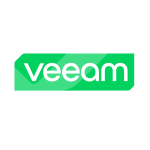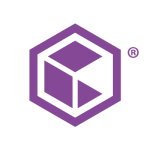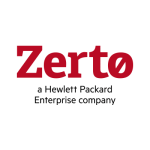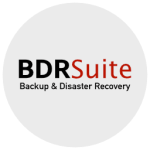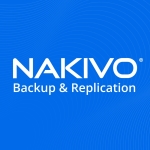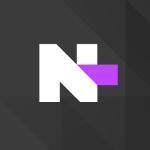What is our primary use case?
We use two versions — one version is deployed on the cloud, the other version is on-premise.
We use Cohesity with Windows Servers, SQL, Microsoft SQL Servers as well as Hyper-V, AHV and VMware VMs.
I am the primary backup operator. There are two to three people that assist me.
What is most valuable?
The Cohesity views are valuable to us just because of the speed of the backup and recovery options — Cohesity VM backups are good for us. We have both VMware and Hyper-V.
The ability to essentially instantly recover a VM and have it run on the Cohesity Platform while all those bits are technically being recovered in the background is useful to us as well.
What needs improvement?
We've certainly had our share of problems with it. Since March, I think we've opened about 150 tickets with Cohesity for support for various issues; we're averaging 4 tickets a week with them. We're working through the issues that we have, but it seems like, on many levels, we're rewriting their code to make it work in our environment.
We, as a city, a local government — we have a lot of old legacy hardware, old operating systems, and old applications.
Commvault was pretty good about supporting those legacy operating systems that we still have in our environment, which includes things like Windows 2000 and Windows 2003. I understand that Cohesity has to keep up with the times and everything, but our inability to back up some of those older platforms is a pain point for us.
I'd like to be able to pause a backup while it's running and have it resume when I tell it to resume. Unfortunately, I can't do that today. I have to basically kill or cancel a job — that's one of my biggest pain points. I'd like the ability to backup clustered file servers, which I can't do today. I have to back them up as NAS devices basically, as opposed to Windows Servers. Those are my two biggest pain points.
For how long have I used the solution?
I have been using Cohesity DataProtect for roughly nine months.
Buyer's Guide
Cohesity DataProtect
April 2025
Learn what your peers think about Cohesity DataProtect. Get advice and tips from experienced pros sharing their opinions. Updated: April 2025.
849,190 professionals have used our research since 2012.
What do I think about the stability of the solution?
One of our Cohesity nodes apparently partitioned itself off from all the other nodes.
We have a five-node cluster, and that was preventing one of our SQL backups from running; it sat there for roughly two days in this partition state. Then, just as suddenly as it partitioned itself, two days later it unpartitioned itself, and the backup eventually completed. It took two days to back up what normally takes about 20 minutes.
Nobody's really been able to explain anything about that to me, other than that somehow a node partitioned itself away from the cluster. I don't know what that means, but yeah, it screwed us up for a few days.
What do I think about the scalability of the solution?
We've had to add nodes — that was pretty simple. We did run into some problems with the IPMI Lights Out Interface, but I wasn't involved in that. As far as I know, once we worked through that issue, it just added itself to the cluster, and all of a sudden we had 20 terabytes of additional storage and a bunch of extra CPU and RAM.
How are customer service and support?
Sometimes, getting help from support can be difficult. On a scale from one to ten, I would give their support a rating of three.
Although we have full support with them, 24/7, it seems like we always fall into this email support model first, as opposed to just picking up the phone and calling me and telling me exactly what the problem is. When we speak over the phone, the issue is usually resolved within a few minutes.
But it takes four weeks to get to that point, after a couple of weeks of exchanging one email a day. They'll say, "Oh, we'll try this." Then I say, "Okay. I tried that." After a couple of weeks of that, I feel compelled to escalate matters through our account manager — "Why can't you just pick up the phone and call me? We can fix this right now."
Which solution did I use previously and why did I switch?
We used to use Commvault but we switched to Cohesity DataProtect mainly for cost reasons.
We also switched to Cohesity for the ability to backup to the Cloud. The version of Commvault that we were using at the time was tape-only, and we didn't want to pay Commvault to upgrade.
How was the initial setup?
It wasn't an easy install for us.
Like I said of our legacy environment, we had an old VMware environment that the latest supported versions of DataProtect would not backup through vCenter. We had to build multiple legacy Cohesity environments to try to get those backups so that legacy VMware environments could work. It probably took five or six tries before we finally said, "Screw it, we'll upgrade the VMware environment". We were finally able to do it because we were able to get some licensing from another department that they were no longer using. Otherwise, we would still be stuck on legacy — with Cohesity backing up legacy VMware.
As always, there was a learning curve that comes with learning a new product, and trying to get our DBA's involved in SQL backsups, etc. That's something that they've not really been involved with in the past with Commvault — we always managed that. There was some learning curve for them as well.
What other advice do I have?
Overall, it's a good product when it works — don't hesitate to go with it, just make sure you get a good implementation engineer from Cohesity that can answer all your questions. Be sure to ask questions every step of the way. They also have a pretty decent training program; I've gone through a few of their training courses and those are useful. Definitely, I would recommend that anybody that's putting it in for the first time, definitely attend a couple of their all-day, six to eight-hour-long courses, and take some of their administrator-type courses.
Overall, once we worked through some of the problems we had, it's been pretty good. Not counting the tech support who I rate low, but the overall product, on a scale from one to ten, I would give Cohesity a rating of eight out of ten.
Which deployment model are you using for this solution?
Private Cloud
If public cloud, private cloud, or hybrid cloud, which cloud provider do you use?
Disclosure: I am a real user, and this review is based on my own experience and opinions.




